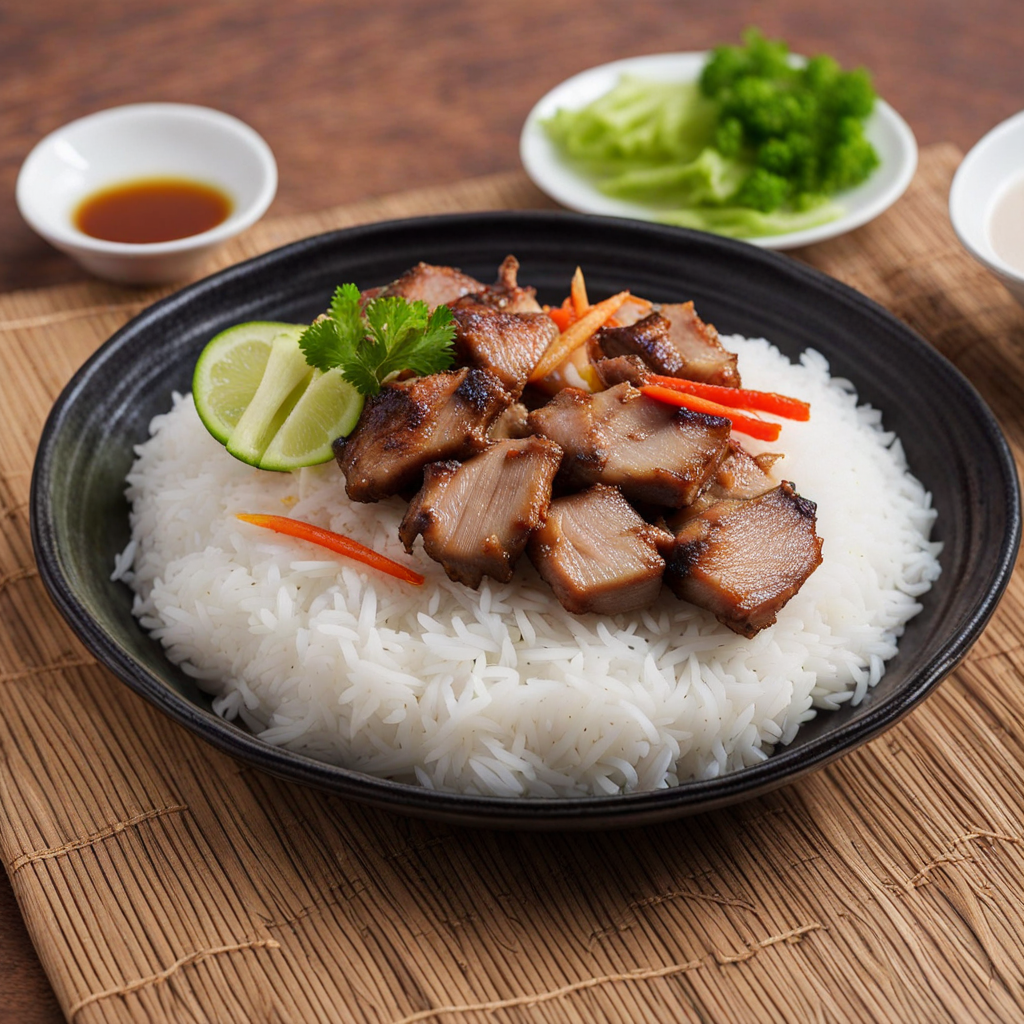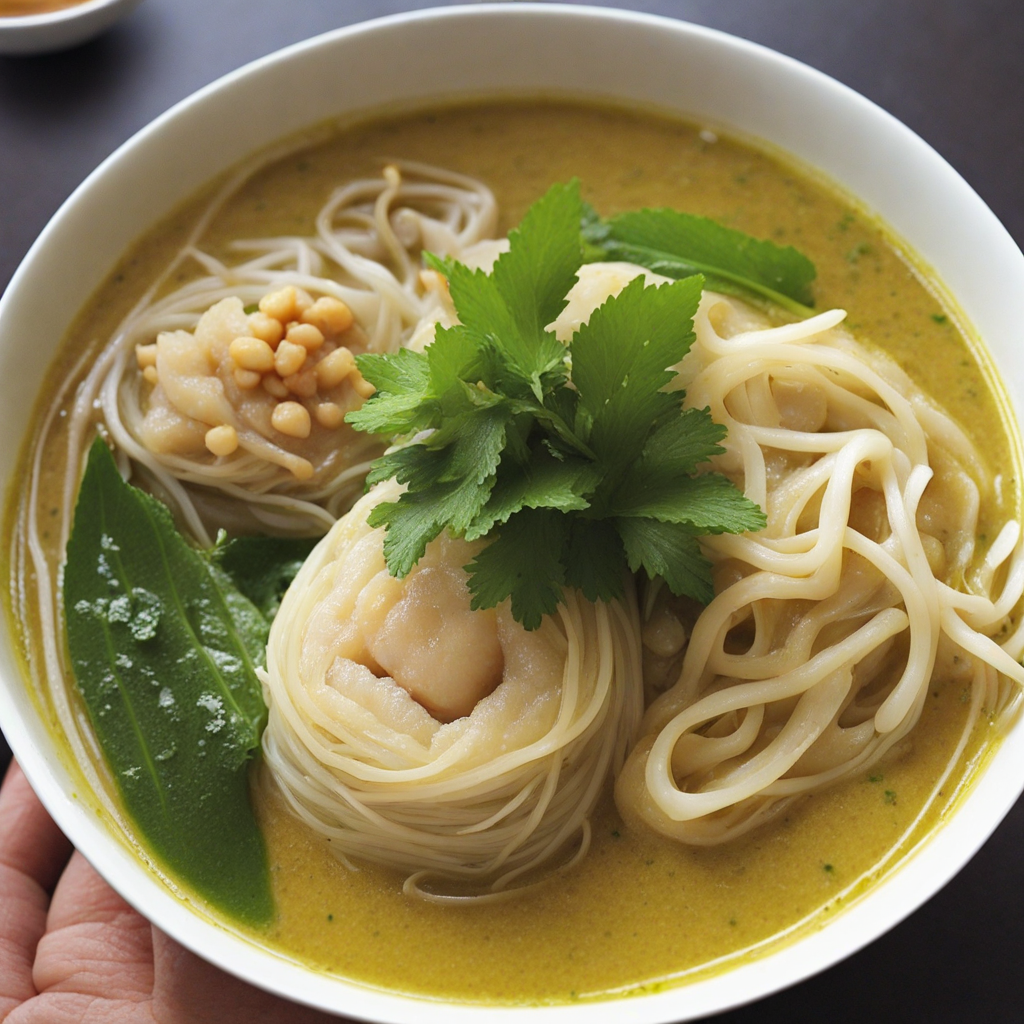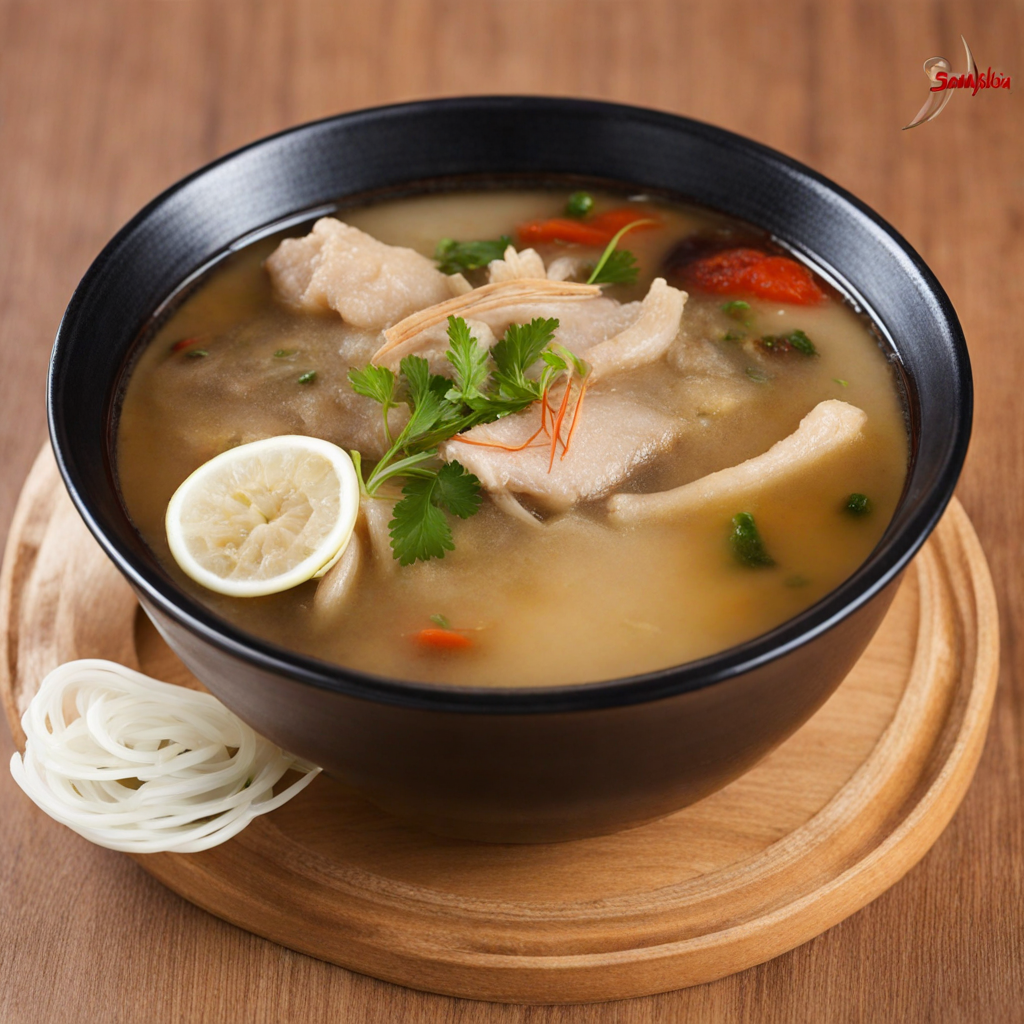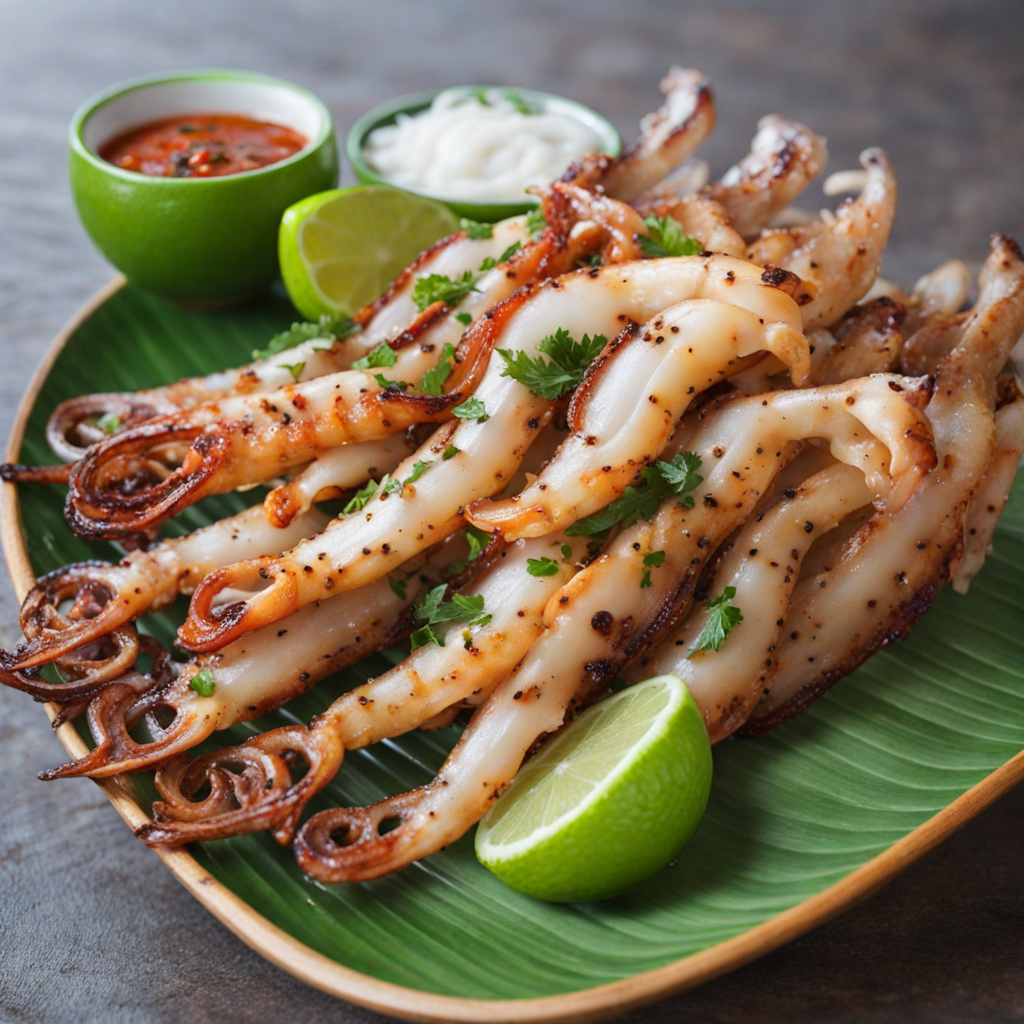Bai Sach Chrouk
Bai Sach Chrouk, a beloved Cambodian dish, is a delightful combination of simplicity and flavor that embodies the essence of street food. The dish primarily features grilled marinated pork, which is usually thinly sliced and cooked over an open flame until it develops a beautiful char and smoky aroma. This succulent pork is often marinated in a mixture of garlic, soy sauce, and coconut milk, giving it a rich, savory profile that is further enhanced by the caramelization that occurs during grilling. Each bite is tender and juicy, offering a satisfying experience that perfectly balances sweetness and umami. Served alongside the grilled pork is a generous portion of fragrant jasmine rice, which has been cooked to perfection, providing a fluffy base that complements the richness of the meat. The dish is often accompanied by pickled vegetables, such as carrots and daikon radish, which add a refreshing crunch and a hint of acidity that cuts through the richness of the pork. A sprinkle of fresh herbs, like cilantro or green onions, may also be added, elevating the dish with a burst of freshness and color. To complete the experience, Bai Sach Chrouk is typically enjoyed with a side of flavorful dipping sauce, often made from soy sauce, lime juice, and chili, allowing diners to customize each bite to their liking. This combination of grilled pork, rice, pickled veggies, and dipping sauce creates an exquisite symphony of flavors and textures, making Bai Sach Chrouk a must-try for anyone looking to explore the vibrant culinary landscape of Cambodia.
How It Became This Dish
The History of បាយសាច់ជ្រូក (Bai Sach Chrouk) in Cambodia Origins and Early Beginnings Bai Sach Chrouk, a beloved Cambodian dish consisting of rice topped with grilled pork, has a rich history that intertwines with the agricultural and cultural fabric of Cambodia. Its roots can be traced back to the agrarian lifestyle of the Khmer people, where rice has long been the staple food. Rice cultivation in this region dates back thousands of years, influenced by the monsoon climate and the fertile plains of the Mekong River basin. The dish itself is simple yet satisfying, typically comprising marinated pork (often shoulder or belly) grilled to perfection and served over a bed of fluffy jasmine rice. The marinade traditionally includes garlic, soy sauce, sugar, and sometimes coconut milk, reflecting the complex flavors that characterize Cambodian cuisine. This simplicity is deceptive, as each component is carefully chosen to complement the others, highlighting the skill involved in its preparation. Cultural Significance Bai Sach Chrouk is more than just a meal; it is a cultural icon in Cambodia. Often enjoyed as a breakfast dish, it serves as a comforting start to the day for many Cambodians. Street vendors throughout cities like Phnom Penh and Siem Reap serve this dish, making it accessible and affordable for people from all walks of life. The experience of grabbing a quick bite of Bai Sach Chrouk on the way to work or school reflects the fast-paced urban life that has emerged in Cambodia over recent decades. The dish is also significant in terms of its social implications. It often brings families together, whether they are enjoying a meal at home or sharing a table at a local eatery. In a society where communal dining is valued, Bai Sach Chrouk serves as a bridge that connects family members and friends over a shared love of food. It is common to see people enjoying this dish while engaging in lively conversations or simply catching up after a long day. Development Over Time The evolution of Bai Sach Chrouk can be observed through the historical changes in Cambodia itself. The Khmer Empire, one of Southeast Asia's most powerful civilizations from the 9th to the 15th centuries, laid the foundation for agricultural practices that would influence the cuisine. However, the dish as we know it today began to take shape in the 20th century. The French colonial period, from the late 19th century to the mid-20th century, introduced new ingredients and culinary techniques to Cambodia. French influence is evident in the use of baguettes, which later evolved into the popular Cambodian sandwich known as "bánh mì." While Bai Sach Chrouk remained rooted in traditional Khmer cooking, the availability of new spices and cooking methods allowed for greater experimentation and refinement. The Khmer Rouge era (1975-1979) was a devastating time for Cambodia, leading to the loss of countless lives and the destruction of cultural heritage. Food was scarce, and traditional dishes often fell by the wayside. However, the resilience of the Cambodian people shone through in their ability to reclaim their culinary identity in the years following the regime's collapse. As the country began to rebuild, Bai Sach Chrouk re-emerged as a symbol of normalcy and a return to everyday pleasures. In the late 20th and early 21st centuries, globalization and tourism significantly impacted the culinary landscape of Cambodia. Bai Sach Chrouk gained international recognition, with more tourists seeking authentic local experiences. Street food tours and culinary classes began to spotlight this iconic dish, allowing visitors to appreciate its simplicity while understanding its deep cultural roots. Modern chefs have also put their spin on Bai Sach Chrouk, experimenting with flavors and presentation while maintaining its core components. Some have introduced fusion elements, incorporating international ingredients or techniques into traditional recipes, thus expanding its appeal while honoring its heritage. This dynamic interplay between tradition and innovation reflects the broader trends in Cambodian cuisine, which continues to evolve while staying connected to its past. Conclusion Bai Sach Chrouk is a dish that tells the story of Cambodia—a narrative of resilience, community, and culinary artistry. From its humble origins rooted in rice cultivation to its status as a cultural icon, this dish encapsulates the heart and soul of Cambodian food. It serves as a reminder of the importance of tradition in a rapidly changing world, representing both the continuity and adaptability of Cambodian cuisine. As Cambodia continues to navigate the challenges of modernity, Bai Sach Chrouk remains a cherished part of its culinary landscape, a dish that not only nourishes the body but also sustains cultural identity. Whether enjoyed at a bustling street stall, in a family home, or at an upscale restaurant, Bai Sach Chrouk embodies the spirit of Cambodia—simple yet profound, familiar yet dynamic—a true testament to the power of food in bringing people together and preserving heritage.
You may like
Discover local flavors from Cambodia







